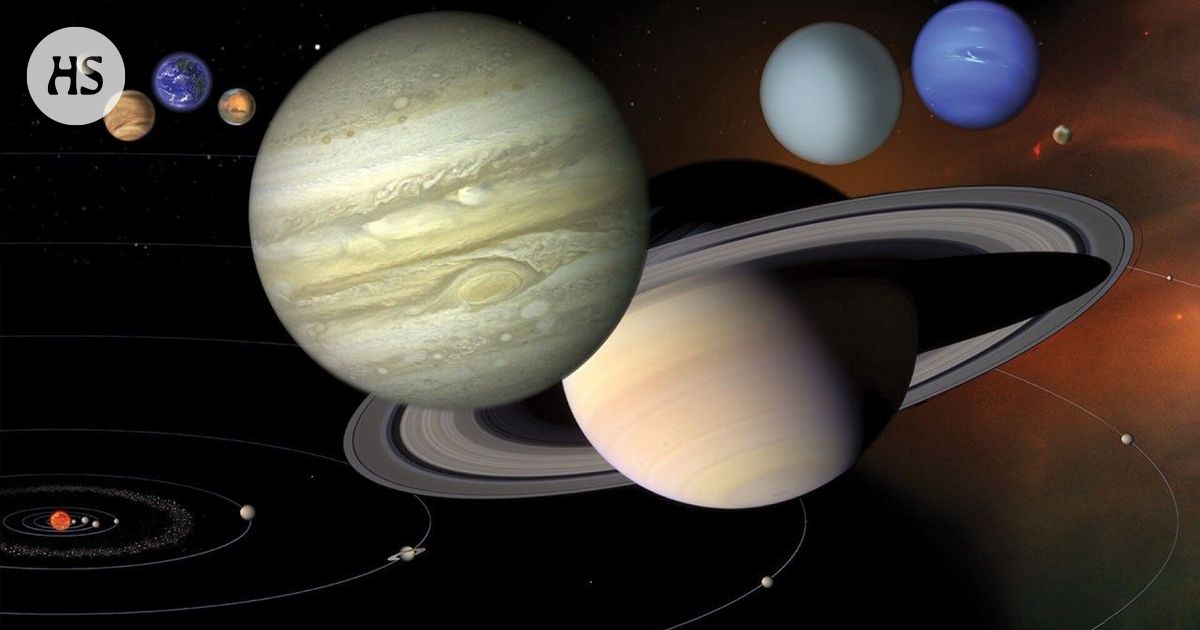Starry sky|On February 28th, the evening will feature all seven planets. The vision will not be repeated until 2040.
The abstract is made by artificial intelligence and checked by man.
At the end of February, all seven planets will see in the evening sky.
Six of the planets are already in the level of a gentle arc in the sky called Ekliptika.
Planet Mercury will join at the end of February. Then, for a moment, all the planets of the solar system will appear. Except, of course, our own Earth.
The same sight will not be repeated next time in 2040.
Planets In a beautiful, gentle arc: Venus, Mars, Jupiter, Saturn, Uranus and Neptunus.
All the planets except Mercury are now visible in the same evening sky for a few weeks. It is advisable to check them immediately after the sunset if the weather is clear.
The phenomenon is slightly different every night until February. The view has been called to the parade of planets.
In about a month, in the evening of February 28, the sky will see an even less frequent planet alignment.
All seven planets will then appear at once because Mercury is joined. However, it can flash quickly with the sun under the horizon.
Five planets will be seen in the early weeks of the early February. Binoculars are needed to see one or distant neptune.
From the early weeks of the southern star sky at around 6 pm in the Helsinki region. Picture with Stellarium web service. The arc line is made on delivery. The web service has not marked Neptune, which is only visible in binoculars.
Planets are on a gentle arc that astronomers invite eclipticax.
The sun seems to be circling us just along Eklipta, one full round within a year.
Ekliptika’s surroundings are also called the zodiac, as there are many animal starred in the area. And also those ancient signs of horoscopes.
Well, in fact, all the planets circulate in the sun and not the planets.
The reason is that all the planets, including our own planet’s land, were once formed from the same dusty and gas cumulative hockey.
Puck had formed around the young sun about 4.6 billion years ago. The time may have been confirmed several times of the oldest stones of the solar system and their from radioisotopes.
All the planets developed in that reel. They are still circulating the sun on almost the same reel plane.
Later, various coincidences have taken some planetary tracks to a slightly tilted level of the reel level. For example, the location of the planet is also determined by the jackplanet Jupiter with his wild gravity.
Ursan that is, a spokesman for an astronomical association Anne Liljeström a little stupid on his blog that the phenomenon is unique.
Of course, the planets in the sky are now approximately in line with the eyes. They could draw a pretty arc, explains Liljeström.
This year, the people of the planet in the country will see two more planetary policies that show five or more of the planets, Liljeström recalls. Last this was the case in the summer of 2022.
Rare This phenomenon is that even all the planets appear at the same glance.
The reason for the sparse is that the planets circulate the sun at a very different pace. A small Mercury rotates the sun near it in one round in about 88 in the country per day.
On the other side of our solar system, one round of Neptune is less than 165 years.
Therefore, planets are rarely visible in the same direction.
It must be remembered that if the planets are in the same direction at the same time, it is an optical illusion for the earth’s man, says New Scientist.
The planets are not close together in space, even though they appear in the same direction. There are millions of kilometers between them.
For February When arriving, Venus, Saturn and Neptune are grouped above the Aquarius constellation. Early in the evening they are close to the western horizon.
Neptune is about nine degrees above Venus and slightly east.
Planets Visit well when letting your eyes get used to the dark for 20-30 minutes.
In addition, it is a good idea to apply for a place that is far from cities or much artificial light.
The exact rise of each planet over the horizon varies depending on what is your location on the Earth. Sometimes Uranus and at least Neptune requires a good binoculars or a telescope.
Help in viewing planets are online Stellarium Applications like.
